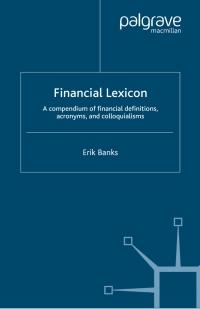


INTEREST RATE SENSITIVITY An investor purchased the following 5 bonds. Each bond had a par value of $1,000 and an 10% yield to maturity on the purchase day. Immediately after the investor purchased them, interest rates fell, and each then had a new YTM of 5%. What is the percentage change in price for each bond after the decline in interest rates? Fill in the following table. Round your answers to the nearest cent or to two decimal places. Enter all amounts as positive numbers. Price @ 10% Price @ 5% Percentage Change 4 10-year, 10% annual coupon 10-year zero 5-year zero 30-year zero $100 perpetuity CURRENT YIELD, CAPITAL GAINS YIELD, AND YIELD TO MATURITY Pelzer Printing Inc. has bonds outstanding with 9 years left to maturity. The bonds have a 8% annual coupon rate and were issued 1 year ago at their par value of $1,000. However, due to changes in interest rates, the bond's market price has fallen to $908.30. The capital gains yield last year was -9.17%. a. What is the yield to maturity? Do not round intermediate calculations. Round your answer to two decimal places. % b. For the coming year, what is the expected current yield? (Hint: Refer to footnote 7 for the definition of the current yield and to Table 7.1.) Do not round intermediate calculations. Round your answer to two decimal places. For the coming year, what is the expected capital gains yield? (Hint: Refer to footnote 7 for the definition of the current yield and to Table 7.1.) Do not round intermediate calculations. Round your answer to two decimal places. % c. Will the actual realized yields be equal to the expected yields if interest rates change? If not, how will they differ? I. As long as promised coupon payments are made, the current yield will change as a result of changing interest rates. However, changing rates will cause the price to change and as a result, the realized return to investors should equal the YTM. II. As long as promised coupon payments are made, the current yield will change as a result of changing interest rates. However, changing rates will not cause the price to change and as a result, the realized return to investors should equal the YTM. III. As rates change they will cause the end-of-year price to change and thus the realized capital gains yield to change. As a result, the realized return to investors will differ from the YTM. IV. As long as promised coupon payments are made, the current yield will change as a result of changing interest rates. However, changing rates will cause the price to change and as a result, the realized return to investors will differ from the YTM. V. As long as promised coupon payments are made, the current yield will not change as a result of changing interest rates. However, changing rates will cause the price to change and as a result, the realized return to investors should equal the YTM. It is now January 1, 2016, and you are considering the purchase of an outstanding bond that was issued on January 1, 2014. It has a 9.5% annual coupon and had a 30-year original maturity. (It matures on December 31, 2043.) There is 5 years of call protection (until December 31, 2018), after which time it can be called at 109-that is, at 109% of par, or $1,090. Interest rates have declined since it was issued, and it is now selling at 116.575% of par, or $1,165.75. a. What is the yield to maturity? Round your answer to two decimal places. 0% What is the yield to call? Round your answer to two decimal places. b. If you bought this bond, which return would you actually earn? Select the correct option. I. Investors would not expect the bonds to be called and to earn the YTM because the YTM is greater than the YTC. II. Investors would not expect the bonds to be called and to earn the YTM because the YTM is less than the YTC. III. Investors would expect the bonds to be called and to earn the YTC because the YTC is less than the YTM. IV. Investors would expect the bonds to be called and to earn the YTC because the YTM is less than the YTC. V. Investors would expect the bonds to be called and to earn the YTC because the YTC is greater than the YTM. -Select- c. Suppose the bond had been selling at a discount rather than a premium. Would the yield to maturity have been the most likely return, or would the yield to call have been most likely? I. Investors would expect the bonds to be called and to earn the YTC because the YTC is less than the YTM. II. Investors would not expect the bonds to be called and to earn the YTM because the YTM is greater than the YTC. III. Investors would not expect the bonds to be called and to earn the YTM because the YTM is less than the YTC. IV. Investors would expect the bonds to be called and to earn the YTC because the YTM is less than the YTC. V. Investors would expect the bonds to be called and to earn the YTC because the YTC is greater than the YTM









